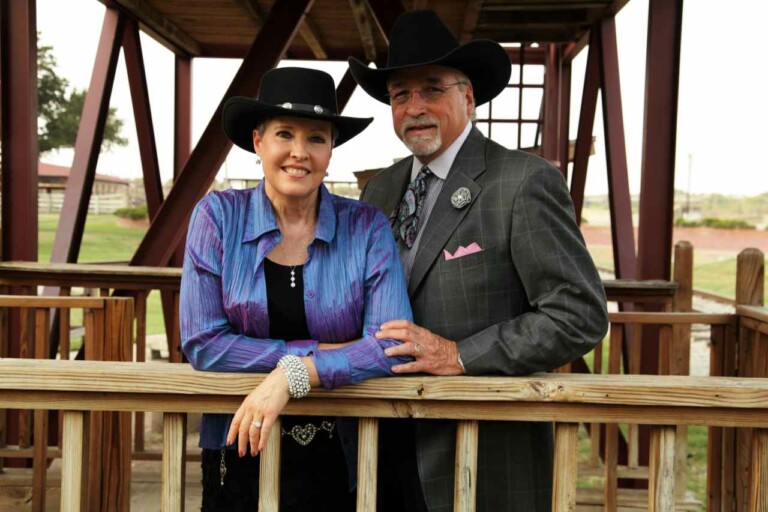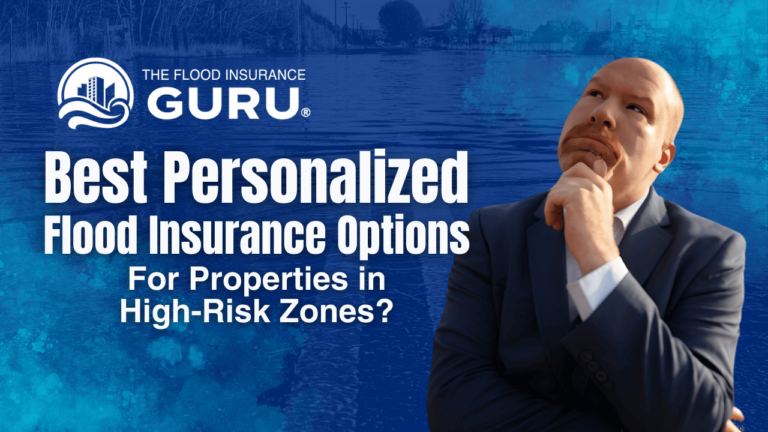What to Do If Your Mortgage Company Says You
Flood Zone AE: What It Means for Your Property and Insurance
Did your lender just require flood insurance even though your home has never flooded?
Are you suddenly in Flood Zone AE and unsure what that means?
You’re not alone — this happens to thousands of homeowners each year. In this article, we’ll explain what Flood Zone AE really means, how it affects your property, and what you can do about it — including how we’ve helped over 1,000 homeowners change their zone designations.
Let’s break it all down so you can make an informed decision about flood insurance coverage in Houston.
What Is Flood Zone AE?
Flood Zone AE is one of FEMA’s Special Flood Hazard Areas (SFHAs), meaning it’s considered high-risk for flooding — even if you’ve never seen floodwaters on your property. Lenders are federally required to mandate flood insurance for properties in this zone.
Here’s what Flood Zone AE means for you:
-
It has a 1% annual chance of flooding (commonly referred to as the “100-year flood”).
-
FEMA has determined Base Flood Elevations (BFEs) for these areas.
-
Mortgage lenders typically require mandatory flood insurance.
-
It may not reflect your true flood risk if the map is outdated or based on broader area assessments.

Why Your Non-Coastal Property Might Be in Flood Zone AE
Even if you’re far from the ocean, here’s why you might be mapped into this zone:
Historical Flooding Patterns
If your area has experienced floods — even decades ago — it may have been designated based on past events.
Topography and Drainage
Low-lying areas or neighborhoods near creeks and poor drainage systems are prime candidates for AE mapping.
Development and Urban Growth
Paved surfaces and stormwater runoff can change how water flows, raising flood risk for previously safe homes.
Climate Change and Rainfall Trends
Changing weather patterns have led FEMA to re-evaluate many areas, especially those with increasing heavy rainfall.
How Flood Zone AE Affects Your Insurance and Property Value
Mandatory Flood Insurance
If you have a federally-backed mortgage, flood insurance is now non-negotiable.
Insurance Coverage Limits
Standard NFIP policies max out at $250,000 for the structure and $100,000 for contents — often too low for high-value homes.
Impact on Market Value
Being in an AE zone can reduce your property’s resale value — or scare off buyers altogether.
STAT: According to Bankrate, homes in high-risk flood zones may see property values drop by up to 10% or more if flood insurance isn’t handled proactively.
Understanding Your Actual Flood Risk
Keep in mind: flood zone ≠ actual risk.
-
Elevation vs. Base Flood Elevation (BFE)
-
Property-specific factors like slope, drainage, or landscaping.
-
Impact of local development — new construction can change water flow and increase risk.
Flood Protection Strategies for High-Value Homeowners
Layered Insurance Coverage
Explore private flood options or excess coverage above NFIP limits.
Risk Mitigation Investments
Things like elevation, drainage improvements, and barriers can reduce both risk and premiums.
Documentation and Advocacy
Challenge your zone with proper elevation certificates and historical evidence.
State-Specific Flood Considerations
Need help with your state’s flood requirements?
Click here to learn more about what your state may require.
Your Flood Protection Plan: Step-by-Step
-
Know Your Real Risk — Get a flood zone review or elevation certificate.
-
Review Your Current Coverage — Know what your NFIP or private policy actually protects.
-
Explore Your Policy Options — Compare NFIP with private flood insurance.
-
Make Strategic Upgrades — Document mitigation to support lower premiums or zone changes.
Conclusion: You’re Not Powerless
If you’ve recently been moved into Flood Zone AE, it’s easy to feel like this is happening to you — like you’re stuck. But now you understand what this designation means, how it affects your finances, and what you can do to respond. Your next step is to download our free guide:

Reassure
We specialize in helping homeowners across the U.S. protect their properties and reclaim peace of mind. Let us help you take the next step.Almost 30% of flood insurance claims come from low-risk areas, so do not assume your home is safe.
Our team has helped hundreds of Houston homeowners understand their flood risk and secure the right flood insurance coverage. If you need a personalized flood risk assessment, contact us today.
Not sure which policy is best for you? Get a personalized flood insurance quote today and ensure your home is fully protected.
📌
Now that you understand how flood insurance rates are determined, it’s time to take action:
Navigating the Waters of Flood Insurance in COBRA Zones
When it comes to protecting your home from the unpredictable forces of nature, understanding your flood insurance options is crucial. Many homeowners find themselves navigating the complex landscape of flood insurance, especially when their property lies within a COBRA zone. You’ve asked, and we’re here to answer all your pressing questions about flood insurance in these unique areas.
What Exactly is a COBRA Zone?
What makes COBRA zones different from other flood zones, and why does it matter for my flood insurance?
COBRA zones, or Coastal Barrier Resources System areas, are designated by the federal government to protect natural coastal barriers. Development in these zones is discouraged to conserve natural habitats, minimize loss of human life, and reduce federal expenditure on infrastructure and disaster relief. For homeowners, this means that obtaining federal flood insurance through the National Flood Insurance Program (NFIP) is not an option, making it essential to explore alternative insurance solutions.
Can I Get Flood Insurance in a COBRA Zone?
They Ask: If federal flood insurance isn’t available in COBRA zones, what are my options for protecting my property?
You Answer: While properties in COBRA zones are ineligible for federal flood insurance, private flood insurance becomes a vital alternative. Private insurers offer policies designed to meet the unique needs of homeowners in these areas, ensuring you can secure the protection you need against flooding. It’s crucial to work with an insurance agent who understands the intricacies of flood insurance policies in COBRA zones to find the best coverage for your home.
How Do I Know If My Property is in a COBRA Zone?
They Ask: How can I determine if my property is located within a COBRA zone and understand the implications for my flood insurance coverage?
You Answer: Identifying whether your property is in a COBRA zone is the first step in navigating your flood insurance options. You can use tools like the CBRS Mapper provided by the Fish and Wildlife Service or consult with a knowledgeable insurance agent. Understanding your property’s location helps clarify your insurance options and ensures you’re pursuing the right coverage for your situation.
What Should I Look for in a Flood Insurance Policy?
They Ask: What key factors should I consider when choosing a flood insurance policy for my property in a COBRA zone?
You Answer: When selecting a flood insurance policy in a COBRA zone, consider coverage limits, deductibles, and exclusions. It’s also important to assess the insurer’s reputation and the policy’s provisions for claims handling. An insurance agent specializing in flood insurance can help you compare policies and choose one that offers comprehensive protection tailored to your needs.
Conclusion
Understanding flood insurance in COBRA zones doesn’t have to be a daunting task. By asking the right questions and seeking expert advice, you can navigate the complexities of securing the right flood insurance for your property. Remember, protecting your home from flooding is about ensuring your peace of mind and financial security, regardless of where you live.
Navigating the Waters of Flood Insurance in COBRA Zones
When it comes to protecting your home from the unpredictable forces of nature, understanding your flood insurance options is crucial. Many homeowners find themselves navigating the complex landscape of flood insurance, especially when their property lies within a COBRA zone. You’ve asked, and we’re here to answer all your pressing questions about flood insurance in these unique areas.
What Exactly is a COBRA Zone?
What makes COBRA zones different from other flood zones, and why does it matter for my flood insurance?
COBRA zones, or Coastal Barrier Resources System areas, are designated by the federal government to protect natural coastal barriers. Development in these zones is discouraged to conserve natural habitats, minimize loss of human life, and reduce federal expenditure on infrastructure and disaster relief. For homeowners, this means that obtaining federal flood insurance through the National Flood Insurance Program (NFIP) is not an option, making it essential to explore alternative insurance solutions.
Can I Get Flood Insurance in a COBRA Zone?
They Ask: If federal flood insurance isn’t available in COBRA zones, what are my options for protecting my property?
You Answer: While properties in COBRA zones are ineligible for federal flood insurance, private flood insurance becomes a vital alternative. Private insurers offer policies designed to meet the unique needs of homeowners in these areas, ensuring you can secure the protection you need against flooding. It’s crucial to work with an insurance agent who understands the intricacies of flood insurance policies in COBRA zones to find the best coverage for your home.
How Do I Know If My Property is in a COBRA Zone?
They Ask: How can I determine if my property is located within a COBRA zone and understand the implications for my flood insurance coverage?
You Answer: Identifying whether your property is in a COBRA zone is the first step in navigating your flood insurance options. You can use tools like the CBRS Mapper provided by the Fish and Wildlife Service or consult with a knowledgeable insurance agent. Understanding your property’s location helps clarify your insurance options and ensures you’re pursuing the right coverage for your situation.
What Should I Look for in a Flood Insurance Policy?
They Ask: What key factors should I consider when choosing a flood insurance policy for my property in a COBRA zone?
You Answer: When selecting a flood insurance policy in a COBRA zone, consider coverage limits, deductibles, and exclusions. It’s also important to assess the insurer’s reputation and the policy’s provisions for claims handling. An insurance agent specializing in flood insurance can help you compare policies and choose one that offers comprehensive protection tailored to your needs.
Conclusion
Understanding flood insurance in COBRA zones doesn’t have to be a daunting task. By asking the right questions and seeking expert advice, you can navigate the complexities of securing the right flood insurance for your property. Remember, protecting your home from flooding is about ensuring your peace of mind and financial security, regardless of where you live.
Navigating the Waters of Flood Insurance in COBRA Zones
When it comes to protecting your home from the unpredictable forces of nature, understanding your flood insurance options is crucial. Many homeowners find themselves navigating the complex landscape of flood insurance, especially when their property lies within a COBRA zone. You’ve asked, and we’re here to answer all your pressing questions about flood insurance in these unique areas.
What Exactly is a COBRA Zone?
What makes COBRA zones different from other flood zones, and why does it matter for my flood insurance?
COBRA zones, or Coastal Barrier Resources System areas, are designated by the federal government to protect natural coastal barriers. Development in these zones is discouraged to conserve natural habitats, minimize loss of human life, and reduce federal expenditure on infrastructure and disaster relief. For homeowners, this means that obtaining federal flood insurance through the National Flood Insurance Program (NFIP) is not an option, making it essential to explore alternative insurance solutions.
Can I Get Flood Insurance in a COBRA Zone?
They Ask: If federal flood insurance isn’t available in COBRA zones, what are my options for protecting my property?
You Answer: While properties in COBRA zones are ineligible for federal flood insurance, private flood insurance becomes a vital alternative. Private insurers offer policies designed to meet the unique needs of homeowners in these areas, ensuring you can secure the protection you need against flooding. It’s crucial to work with an insurance agent who understands the intricacies of flood insurance policies in COBRA zones to find the best coverage for your home.
How Do I Know If My Property is in a COBRA Zone?
They Ask: How can I determine if my property is located within a COBRA zone and understand the implications for my flood insurance coverage?
You Answer: Identifying whether your property is in a COBRA zone is the first step in navigating your flood insurance options. You can use tools like the CBRS Mapper provided by the Fish and Wildlife Service or consult with a knowledgeable insurance agent. Understanding your property’s location helps clarify your insurance options and ensures you’re pursuing the right coverage for your situation.
What Should I Look for in a Flood Insurance Policy?
They Ask: What key factors should I consider when choosing a flood insurance policy for my property in a COBRA zone?
You Answer: When selecting a flood insurance policy in a COBRA zone, consider coverage limits, deductibles, and exclusions. It’s also important to assess the insurer’s reputation and the policy’s provisions for claims handling. An insurance agent specializing in flood insurance can help you compare policies and choose one that offers comprehensive protection tailored to your needs.
Conclusion
Understanding flood insurance in COBRA zones doesn’t have to be a daunting task. By asking the right questions and seeking expert advice, you can navigate the complexities of securing the right flood insurance for your property. Remember, protecting your home from flooding is about ensuring your peace of mind and financial security, regardless of where you live.
Navigating the Waters of Flood Insurance in COBRA Zones
When it comes to protecting your home from the unpredictable forces of nature, understanding your flood insurance options is crucial. Many homeowners find themselves navigating the complex landscape of flood insurance, especially when their property lies within a COBRA zone. You’ve asked, and we’re here to answer all your pressing questions about flood insurance in these unique areas.
What Exactly is a COBRA Zone?
What makes COBRA zones different from other flood zones, and why does it matter for my flood insurance?
COBRA zones, or Coastal Barrier Resources System areas, are designated by the federal government to protect natural coastal barriers. Development in these zones is discouraged to conserve natural habitats, minimize loss of human life, and reduce federal expenditure on infrastructure and disaster relief. For homeowners, this means that obtaining federal flood insurance through the National Flood Insurance Program (NFIP) is not an option, making it essential to explore alternative insurance solutions.
Can I Get Flood Insurance in a COBRA Zone?
They Ask: If federal flood insurance isn’t available in COBRA zones, what are my options for protecting my property?
You Answer: While properties in COBRA zones are ineligible for federal flood insurance, private flood insurance becomes a vital alternative. Private insurers offer policies designed to meet the unique needs of homeowners in these areas, ensuring you can secure the protection you need against flooding. It’s crucial to work with an insurance agent who understands the intricacies of flood insurance policies in COBRA zones to find the best coverage for your home.
How Do I Know If My Property is in a COBRA Zone?
They Ask: How can I determine if my property is located within a COBRA zone and understand the implications for my flood insurance coverage?
You Answer: Identifying whether your property is in a COBRA zone is the first step in navigating your flood insurance options. You can use tools like the CBRS Mapper provided by the Fish and Wildlife Service or consult with a knowledgeable insurance agent. Understanding your property’s location helps clarify your insurance options and ensures you’re pursuing the right coverage for your situation.
What Should I Look for in a Flood Insurance Policy?
They Ask: What key factors should I consider when choosing a flood insurance policy for my property in a COBRA zone?
You Answer: When selecting a flood insurance policy in a COBRA zone, consider coverage limits, deductibles, and exclusions. It’s also important to assess the insurer’s reputation and the policy’s provisions for claims handling. An insurance agent specializing in flood insurance can help you compare policies and choose one that offers comprehensive protection tailored to your needs.
Conclusion
Understanding flood insurance in COBRA zones doesn’t have to be a daunting task. By asking the right questions and seeking expert advice, you can navigate the complexities of securing the right flood insurance for your property. Remember, protecting your home from flooding is about ensuring your peace of mind and financial security, regardless of where you live.
Information contained on this page is provided by an independent third-party content provider. This website make no warranties or representations in connection therewith. If you are affiliated with this page and would like it removed please contact editor @producerpress.com







